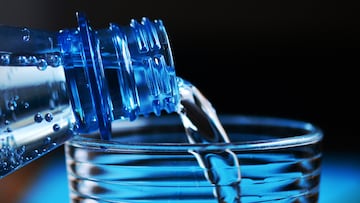Why is there a distilled water shortage and how can you make it at home?
Purified water, free of all minerals and other substances, can be made cheaply and easily in a home kitchen if you have the time.


A combination of high demand and supply chain issues have led to a shortage of distilled water across the country. Distilled water is the purest form of H2O, stripped of all minerals and other substances and is typically needed for medical and industrial processes.
It is often used in cooling systems and aquariums, in steam irons and laboratory experiments; and in a number of medical devices that require an ultra-pure form of water to avoid contamination.
Since 2017 there have been a number of localised distilled water shortages in part of the United States, but in the past two years this trend has become a national concern. The pandemic-era supply chain disruption made it more difficult to source and manufacturing rates are still down on pre-covid levels.
Rocky Moutain Water Distillers, a major supplier of the purified product, has also identified a nationwide shortage of the plastic bottles used to package distilled water.
What are the benefits of distilled water?
Distilled water does not contain the same minerals that are present in spring water or tap water, an important source of minerals, so is not typically recommended for regular drinking, despite being safe to consume.
Where distilled water certainly has benefits is in devices like an iron, cooling systems or industrial machinery. The minerals present in non-distilled water can build up in and cause damage to the device.
Similarly, plants and fish may react negatively to the minerals that are found in regular water. Aquarium owners are often advised to use distilled water in fish tanks.
How can you make distilled water at home?
The distillation process involves heating water up to the point of evaporation so the H2O molecules turn into water vapour. This pure form of water can then be converted back into a liquid through the process of condensation, leaving you with distilled water. To be classed as distilled water the final product can have no more than 10 parts per million of total dissolved solids, meaning that it must be at least 99.999% H2O.
You can buy distillers to do this process, but it is fairly easy to do without the equipment if you have the time. Here’s how to distil water at home:
1. Place a large pan on a stovetop with eight cups of water, with a smaller pot floating atop the water in the pan. Ensure that there is plenty of room around the sides of the small pot to allow constant airflow.
2. Heat the pan to a medium heat, bringing the water to a steady simmer but being careful not to boil.
3. Place a curved lid on top of the large pan upside down, so the centre of the lid is lower than the sides of the pan. As the water vapour gathers on the underside of the lid it will condense and drop back into the smaller pot in distilled form.
Related stories
4. To speed up the condensation process, place a bag of ice on top of the lid to cool the underside surface. With so much hot water vapour hitting the lid you will need to keep replacing the ice fairly regularly to keep it cold.
This method should allow you to produce distilled water at home. It’s not quick, but the process is easy to carry out in a home kitchen and requires very little equipment.

